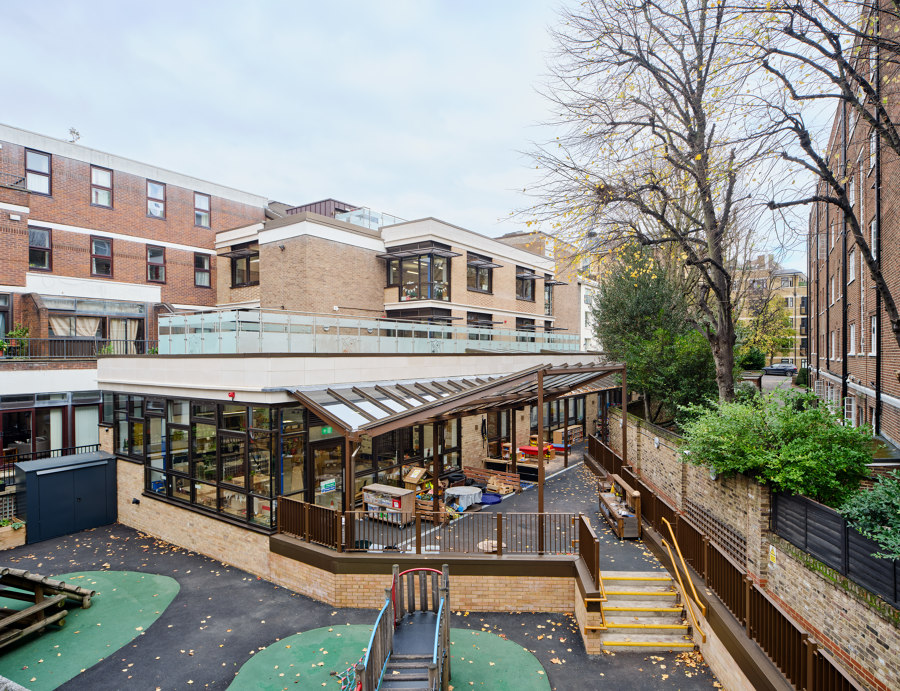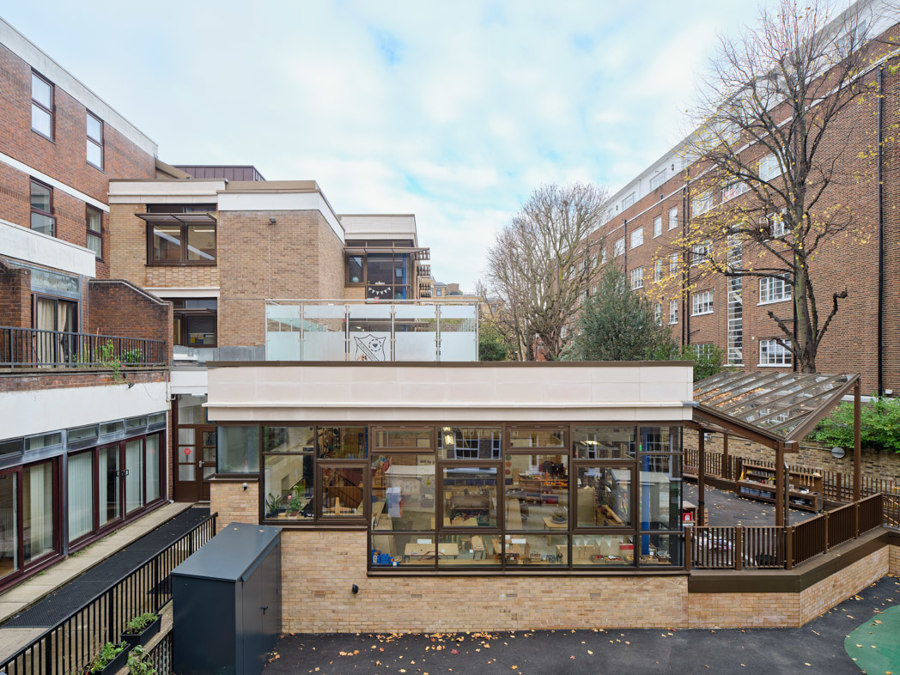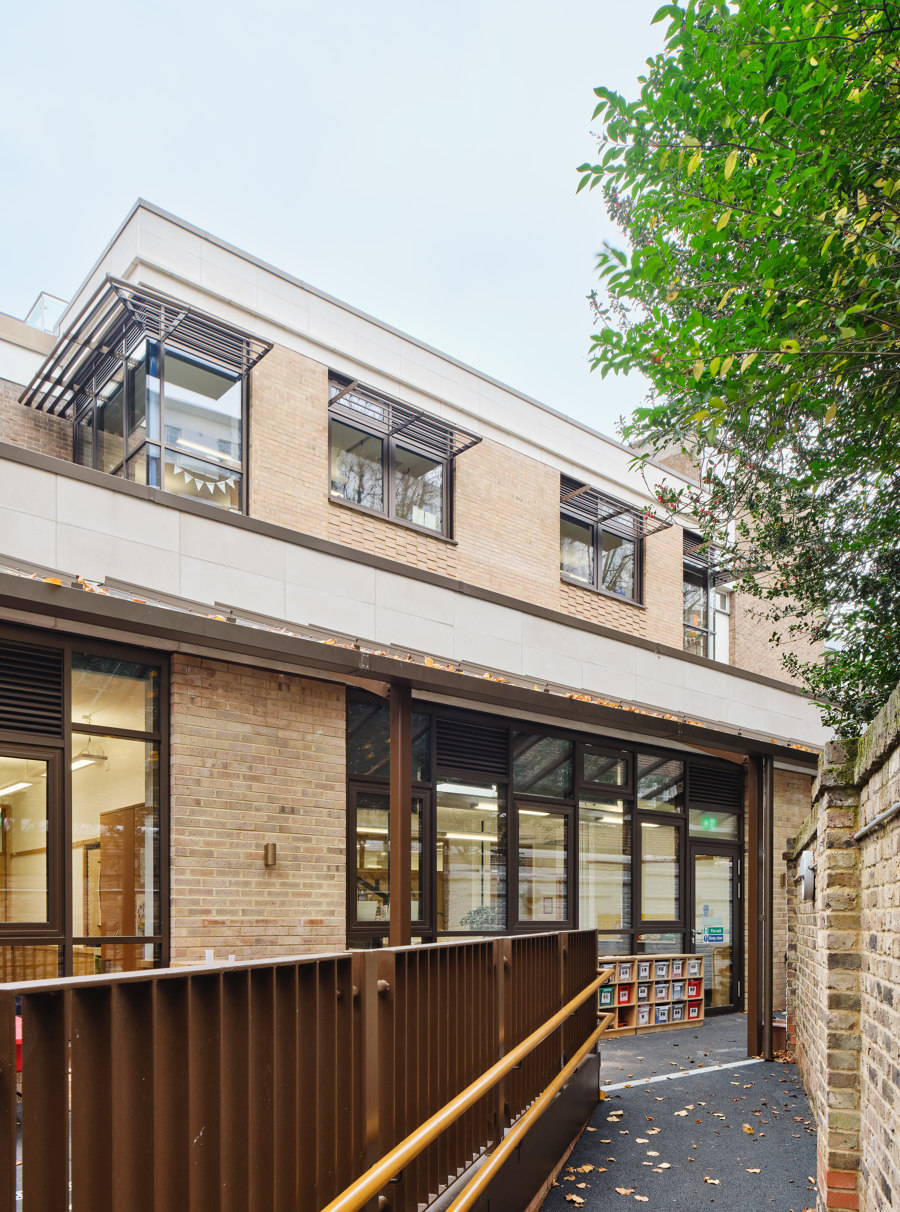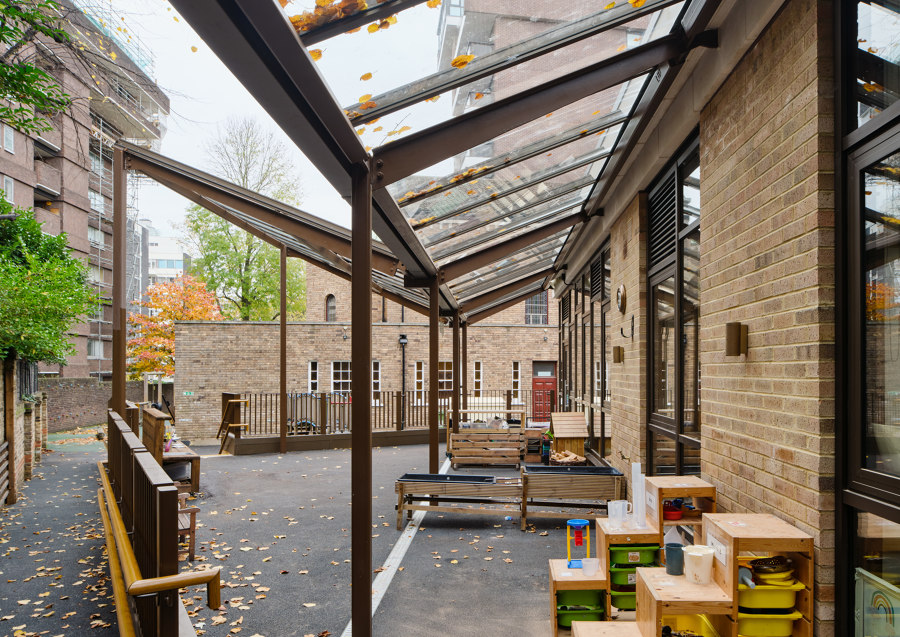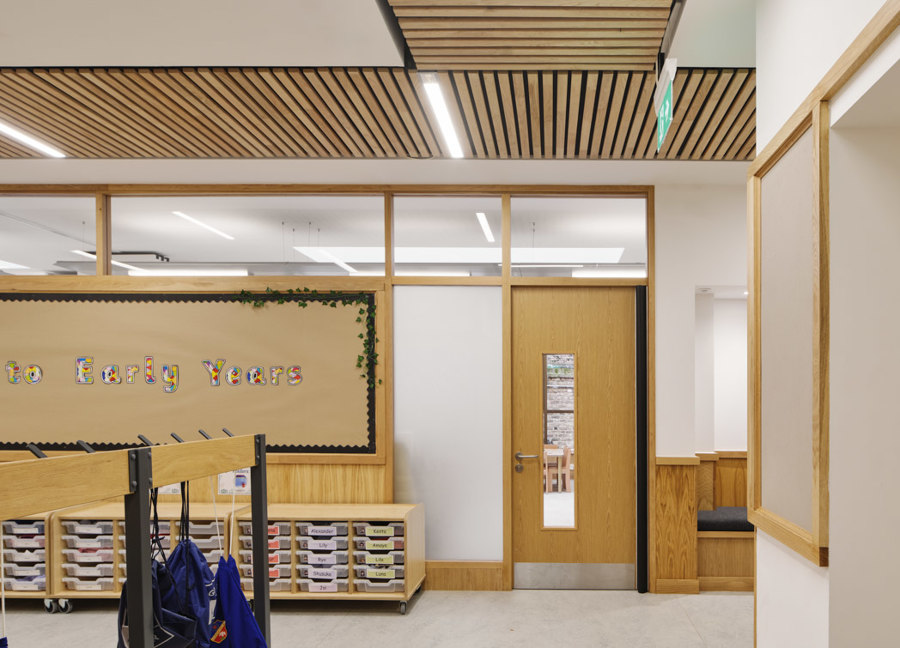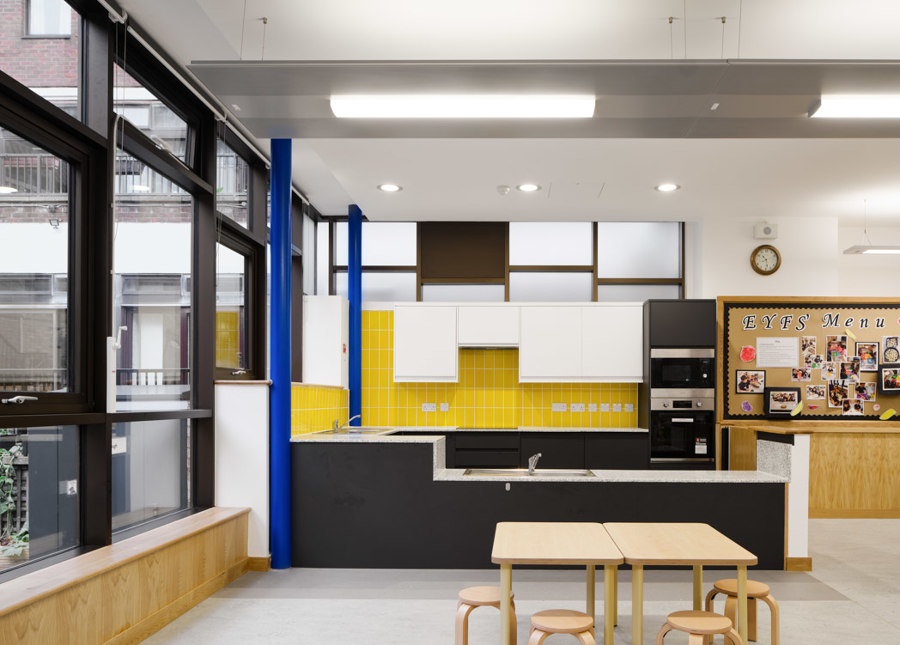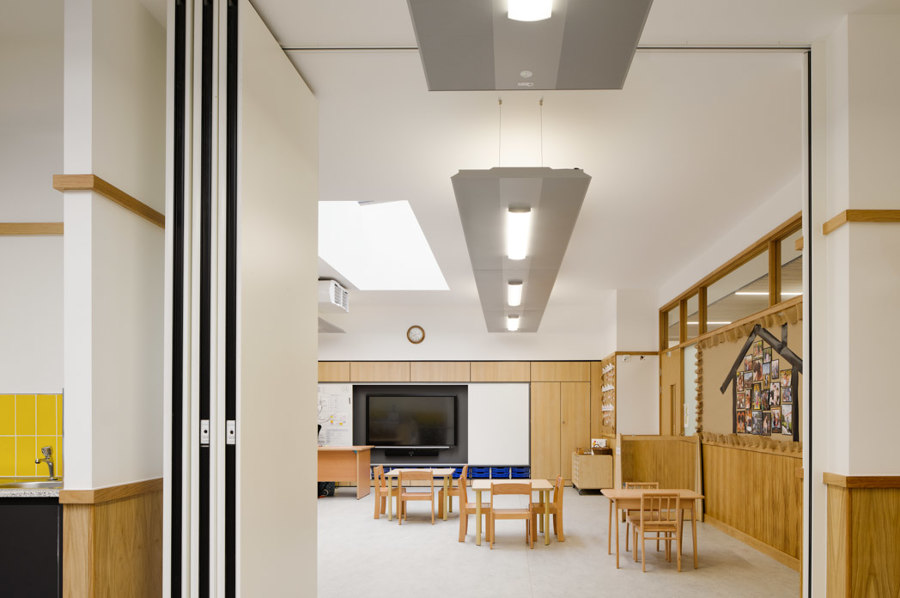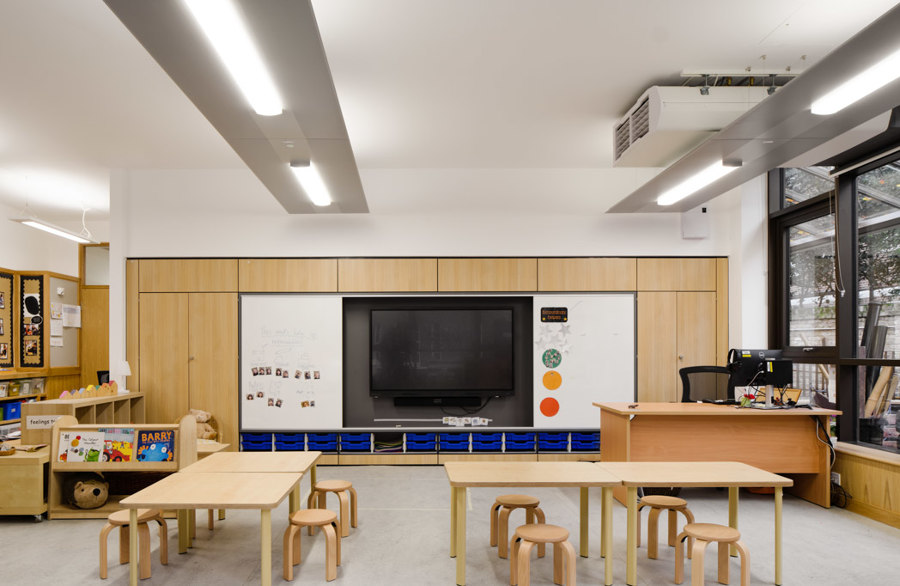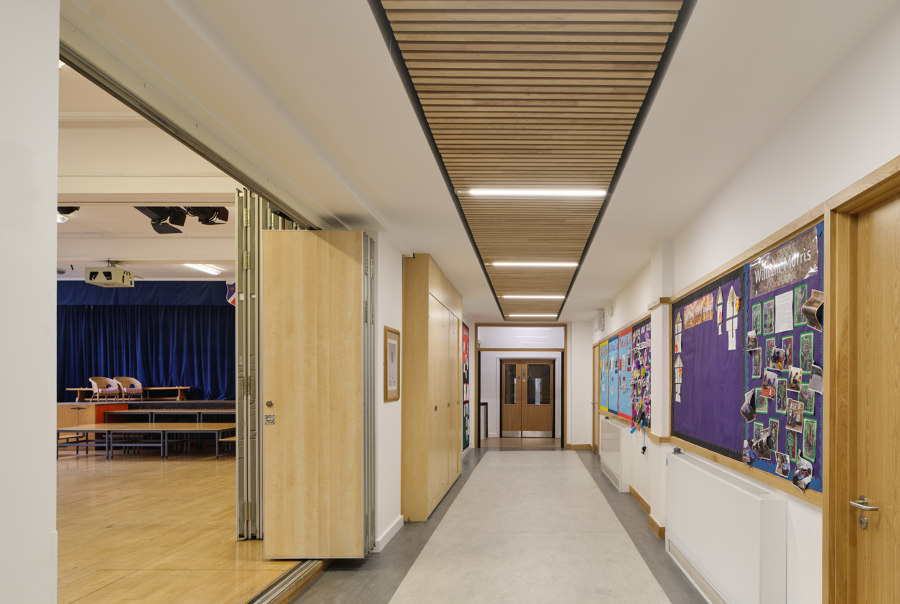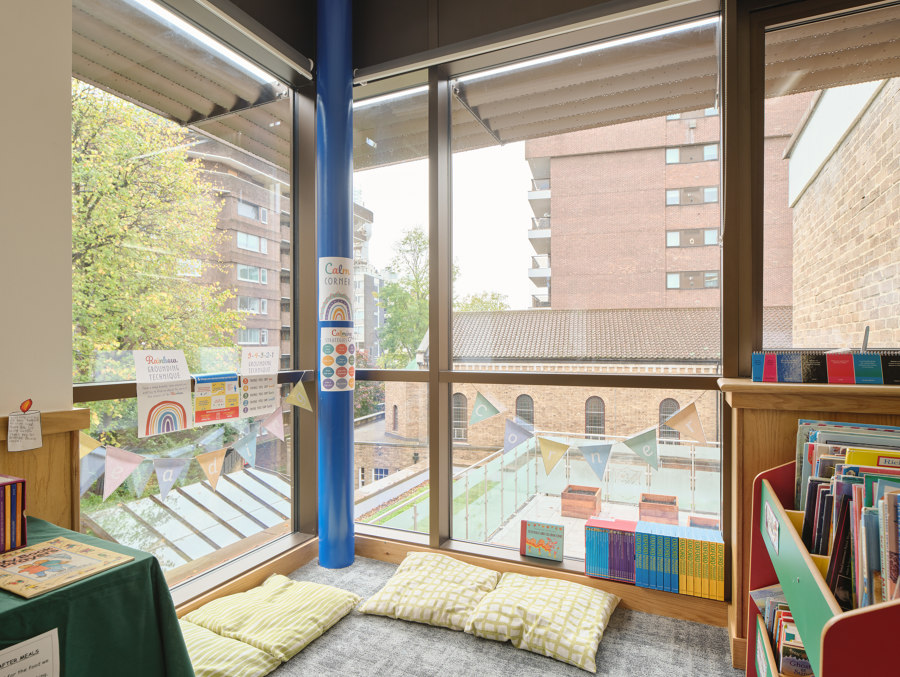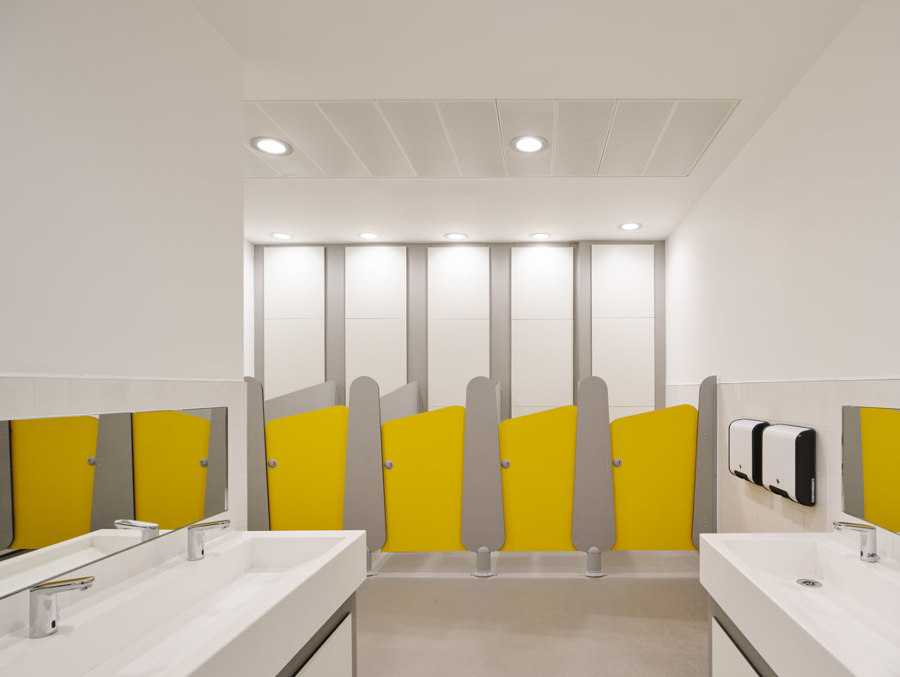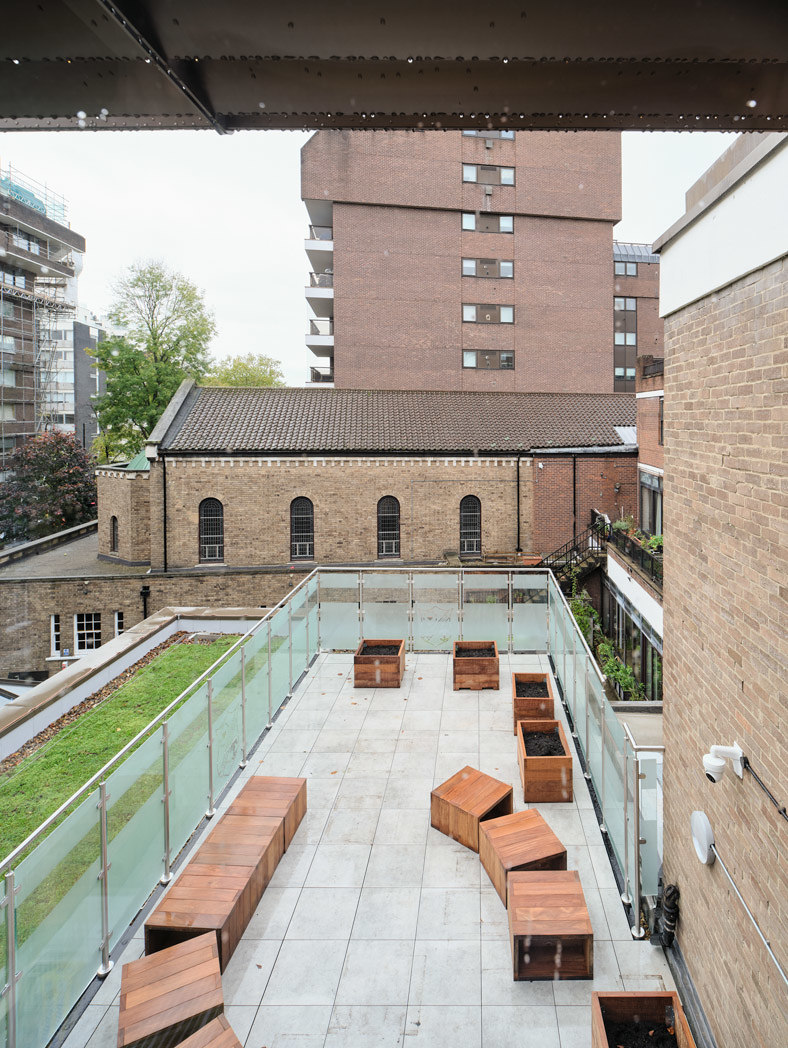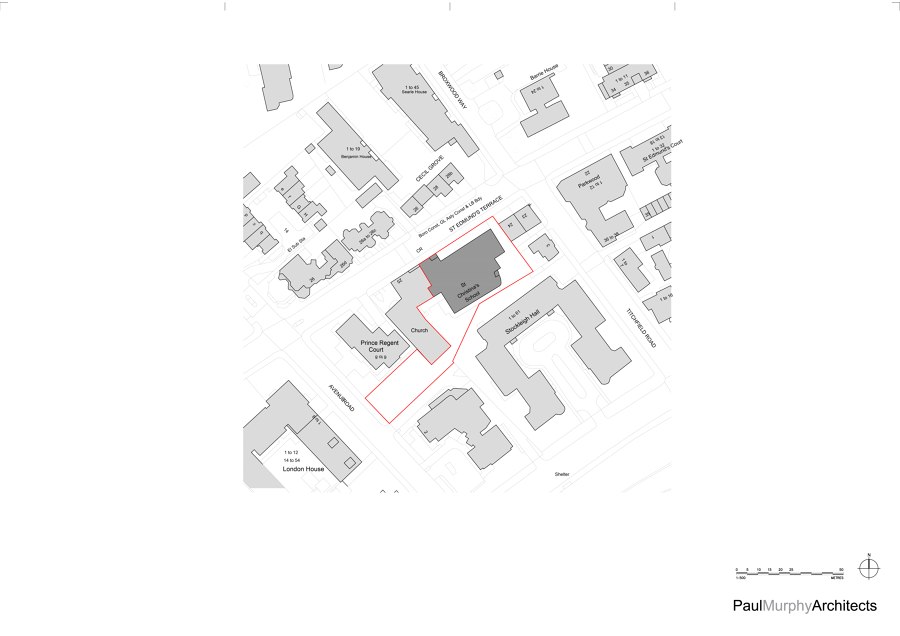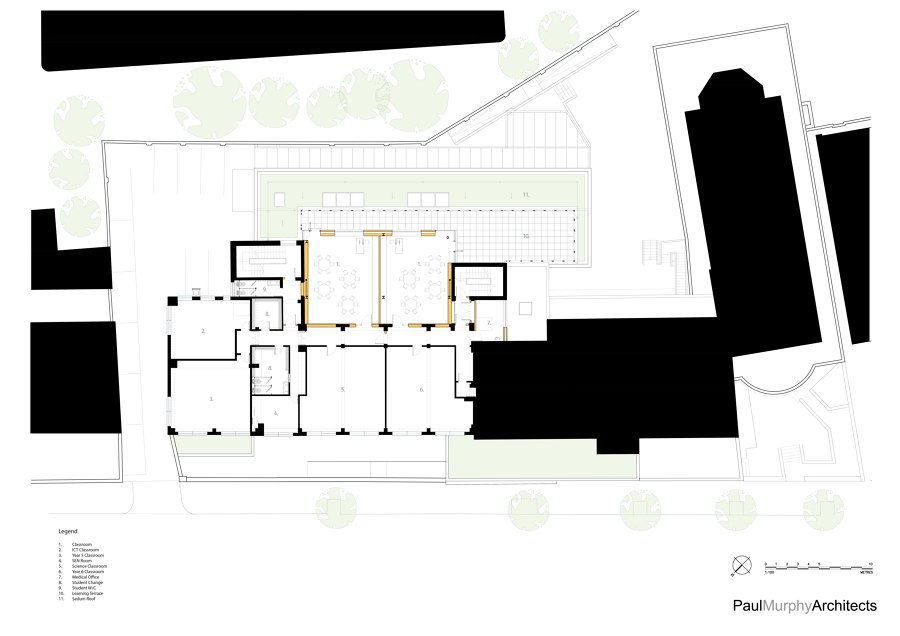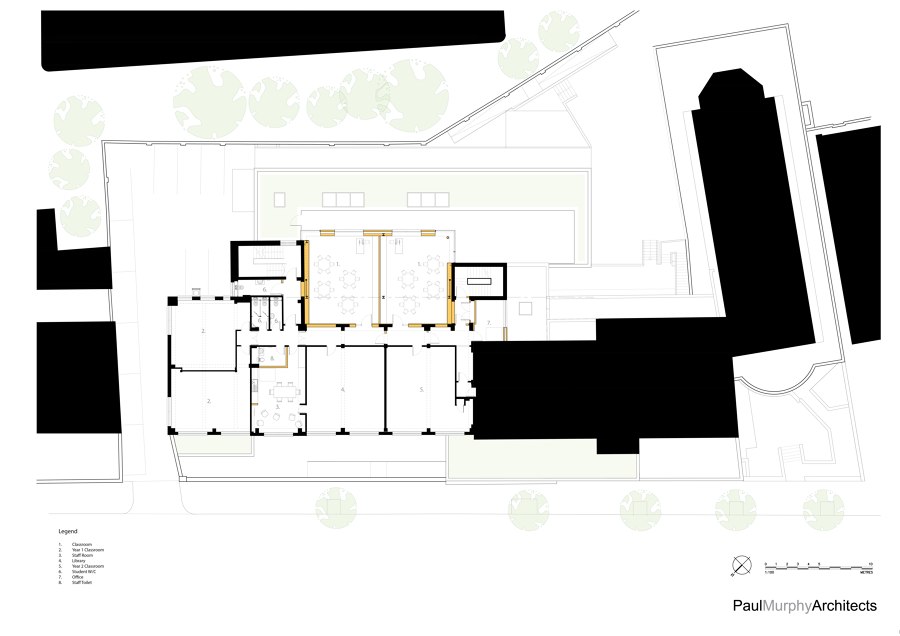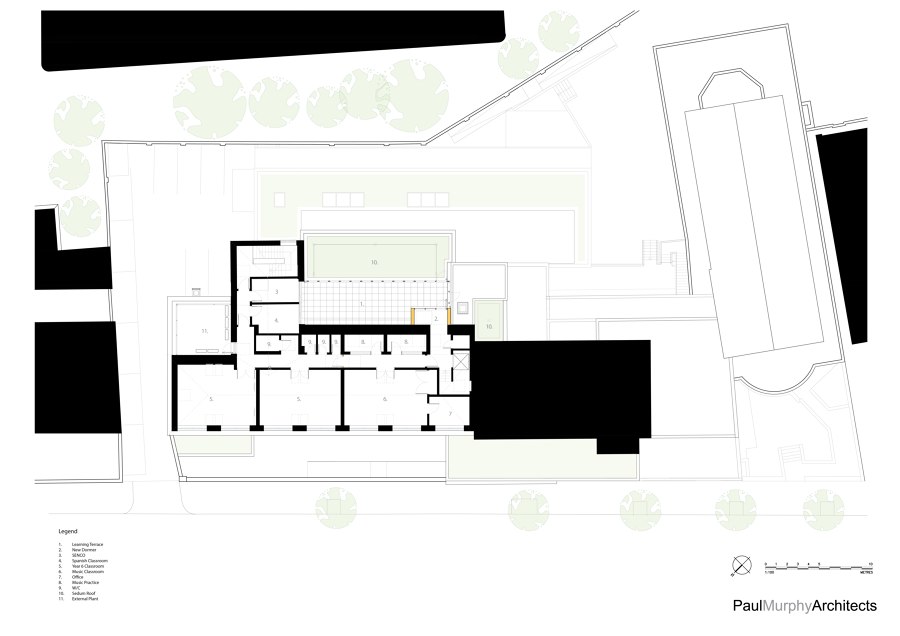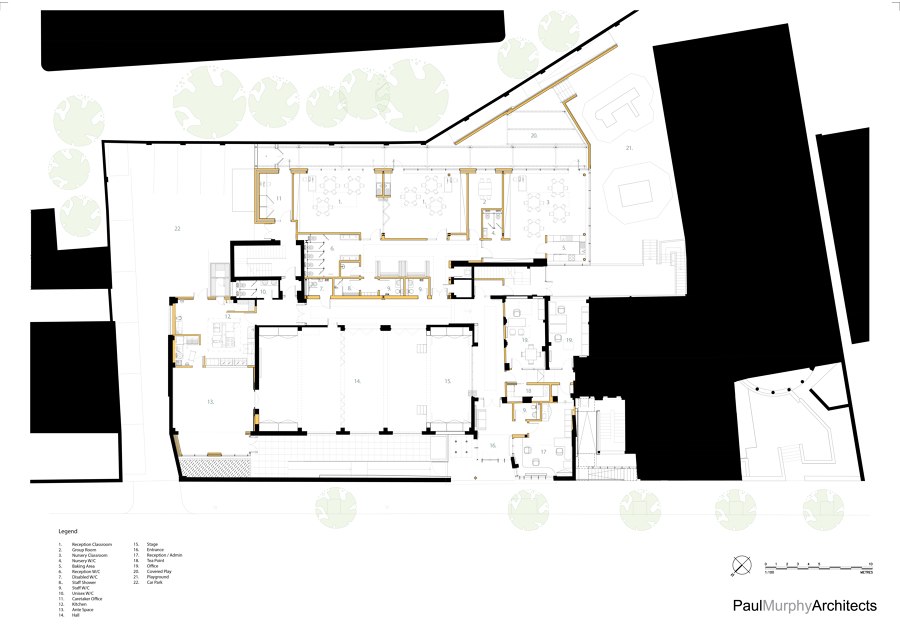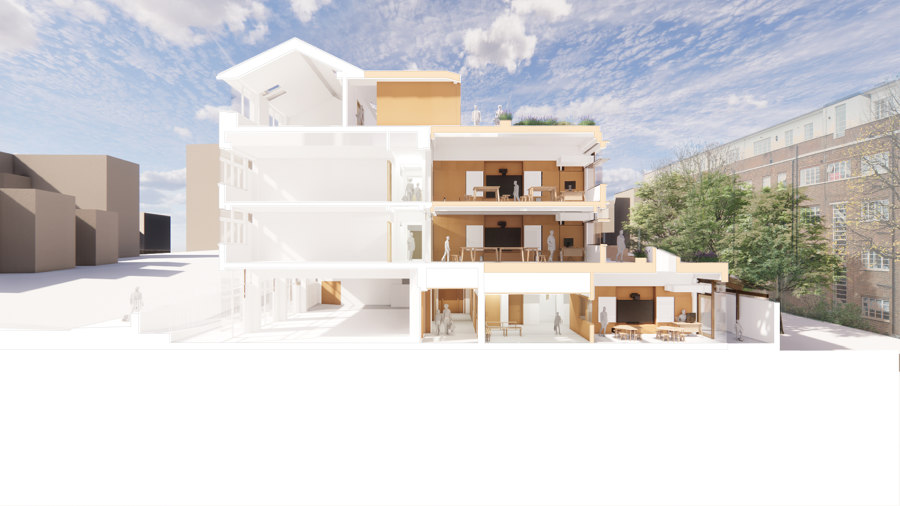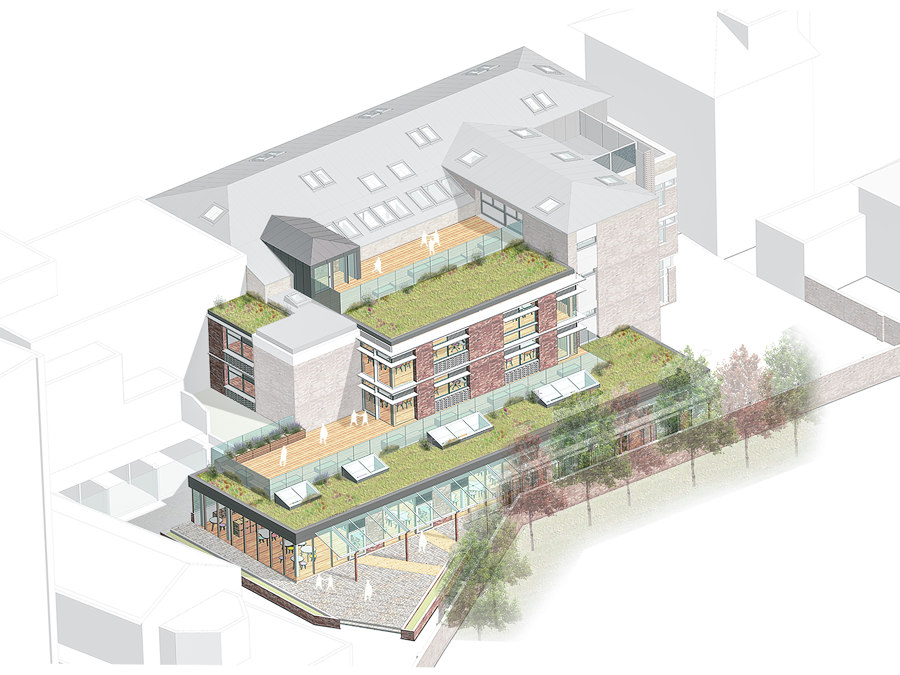A complex refurbishment and new-build delivers inspiring teaching spaces for London primary. Located in a dense residential location in St John’s Wood, just north of Regents Park, St Christina’s Roman Catholic Preparatory School was built in the early 1960’s and shares the site with a Chapel and a Convent who are also the Trustees of the School.
The school, convent, and chapel are situated cheek-by-jowl on an extremely tight site, which presented both physical constraints and logistical challenges to the project. In addition, the school remained operational throughout the building works.
Through extensive consultation with the school and its governors, a master plan was developed which captured the aspirations for the school which was then divided into a two-phase development project. The first phase is complete and comprises the reconfiguration and expansion of the Early Year Wing, four new classrooms above, and additional staff offices and ancillary facilities. The master plan included the restacking of the school, with early years located at the lower level, rising to Year 6/Key Stage 2 on the upper floors. The second phase will see the main entrance reconfigured, the kitchen relocated away from the main entrance, and the main hall refurbished.
The design concept was to demolish the existing single-story Early Years wing and build a new three-story extension providing new teaching accommodation. Essential to the brief was access to the outside for pupils and staff. In such a dense urban site, space is at a premium so the new scheme ingeniously provides an updated covered play area for Early Years on the ground floor, with new roof terraces created on level 1 and level 3 for outside teaching with older pupils. The new extension is seamlessly stitched into the existing building and forms a bridge between two existing staircase towers.
The material selection was informed by strict planning requirements to mirror the brick of the existing school. The extension optimizes natural light through the bronze glazing system, large roof lights, and internal clerestory glazing. A dense plane tree screen to the rear of the site and the use of timber in the existing school informed the design as we sought to bring the idea of trees into the scheme with similar use of timber, manifested as slatted timber ceilings, deep timber sills, timber wainscot paneling, and timber framed pinboards. Collectively these create warm and tactile interior spaces and a calm yet sophisticated internal environment.
The Early Years Wing is slightly separated from the main school and is arranged around a generous internal space with benches, coat hooks, and open access toilets, with clerestory glazing and glazed side panels drawing natural light into the space. Bright yellow tiles and toilet doors add a pop of color to the spaces, with circular steel columns picked out in St Christina’s blue. A new group room supports one-to-one learning and a “calm space” for children and a small niche in the corridor provides the opportunity for informal reading. Glazed on three sides, the nursery was repositioned and extended and incorporates a colorful, fully working kitchen that allows supervised baking and food preparation.
The existing change in levels across the ground floor permitted generous ceiling heights in the early year wing, which are punctuated by large roof lights in the reception classrooms contributing to a spacious, light, and airy learning environment. The two reception classes are linked by a full-height sliding folding door allowing flexibility of use.
The completely reconfigured layout importantly incorporates ancillary facilities such as staff wc’s, shower, cleaner’s cupboard, and utility room – relatively minor considerations in theory, but vital to the successful working of the unit in practice.
All classrooms feature full-width built-in storage, capturing sliding open tray storage, whiteboards, and interactive TVs, with pinboards on most walls in an attempt to guide the inevitable plethora of material stuck on walls and windows. The upper-floor classrooms follow the same language of finishes and benefit from full-height corner windows which provide longer views from the classrooms and access to the external learning terrace at the first-floor level.
Classrooms are all ventilated through a mixed mode system combining ceiling-mounted natural ventilation heat recovery units connected to external louvers incorporated within the window system, working in conjunction with opening windows. Floating ceiling rafts provide lighting and acoustic control.
Externally, new brickwork matches the existing with patterned brickwork adding visual interest below the cill level. Punched windows to the new façade incorporate horizontal brise soleil and cast stone detailing following existing floor slab lines. External terraces are located at the first and third-floor levels, providing alternative learning spaces populated with planters – to be grown by the children - and overlook sedum roofs which provide visual amenities both from the school and neighboring residential properties and assist in withholding rainwater run-off.
Many of the features incorporated are those that we know contribute to lifting the character and quality of school environments, such as thermal mass, natural ventilation, high levels of daylight, bright and generous circulation spaces, and a variety of outdoor landscapes. We look forward to seeing how the school now occupies the building and teachers and children adapt to the new spaces, which we hope will be inspiring and a transformational change in terms of day-to-day use and teaching flexibility.
Design Team:
Paul Murphy Architects
